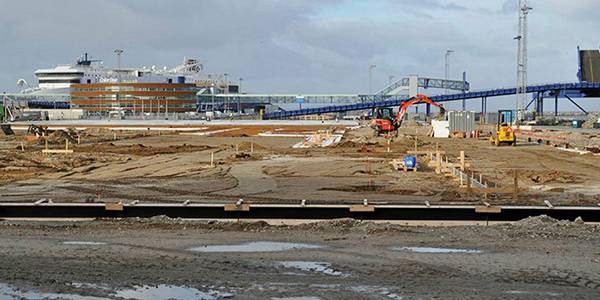Norwegian ownership, Spanish vessel build, Finnish design and Danish port team up to serve quality and volume from 2018.
Norwegian Gannet is the name of a new salmon-farming factory vessel that’ll deliver processed salmon to Hav Lines’ 16,000-square-meter terminal building in Hirtshals, Denmark that’s now under construction.
The Port of Hirtshals made the process terminal announcement at the weekend, and SalmonBusiness has since confirmed a new fish-farm factory transport vessel owned by the Sekkingstad Family and Haugland Group will deliver fish to the facility. Denmark is a popular access point for the European salmon market, and a number of innovative logistics operations by rival players are being developed for fish to the Continent via Hirtshals.

Built in Spain
Norwegian Gannet is being built in Spain using a design by Wartsila that’ll harvest salmon from Norwegian pens for onboard slaughter. The finished fish will head to Hirtshals for further processing and sale.
“Hav Line will insert a Norwegian crew aboard the factory transport vessel,” wrote company chairman and former Cermaq executive, Jon Hindar, in an email to SalmonBusiness. Hav Line Group is a Bergen-, Norway based aquaculture company owned by the Sekkingstad family’s investment vehicle, Trient, and Haugland Group.
Operational from 2018
The Hav Lines terminal in Hirtshals can grow it’s capacity “dynamically” should a greater number of factory vessels turn up over time, a statement from the Danish port said. “The terminal building which Norwegian Hav Line are building at Hirtshals Havn will create change in the logistics of salmon,” a port statement said. Higher fish quality for overseas and European markets is a stated aim for the new facility.
That new facility is expected to be operational in 2018, when it will process salmon from the grow-outs of Erko Seafood, an operation owned by the Sekkingstads and Haugland. The Sekkingstads already own considerable salmon interests in Denmark via their buyup of Skagerak Salmon in 2015.
The salmon-processing and transportation vessel “is the world’s first vessel of its kind with a hybrid-battery solution,” according to Wartsila.


